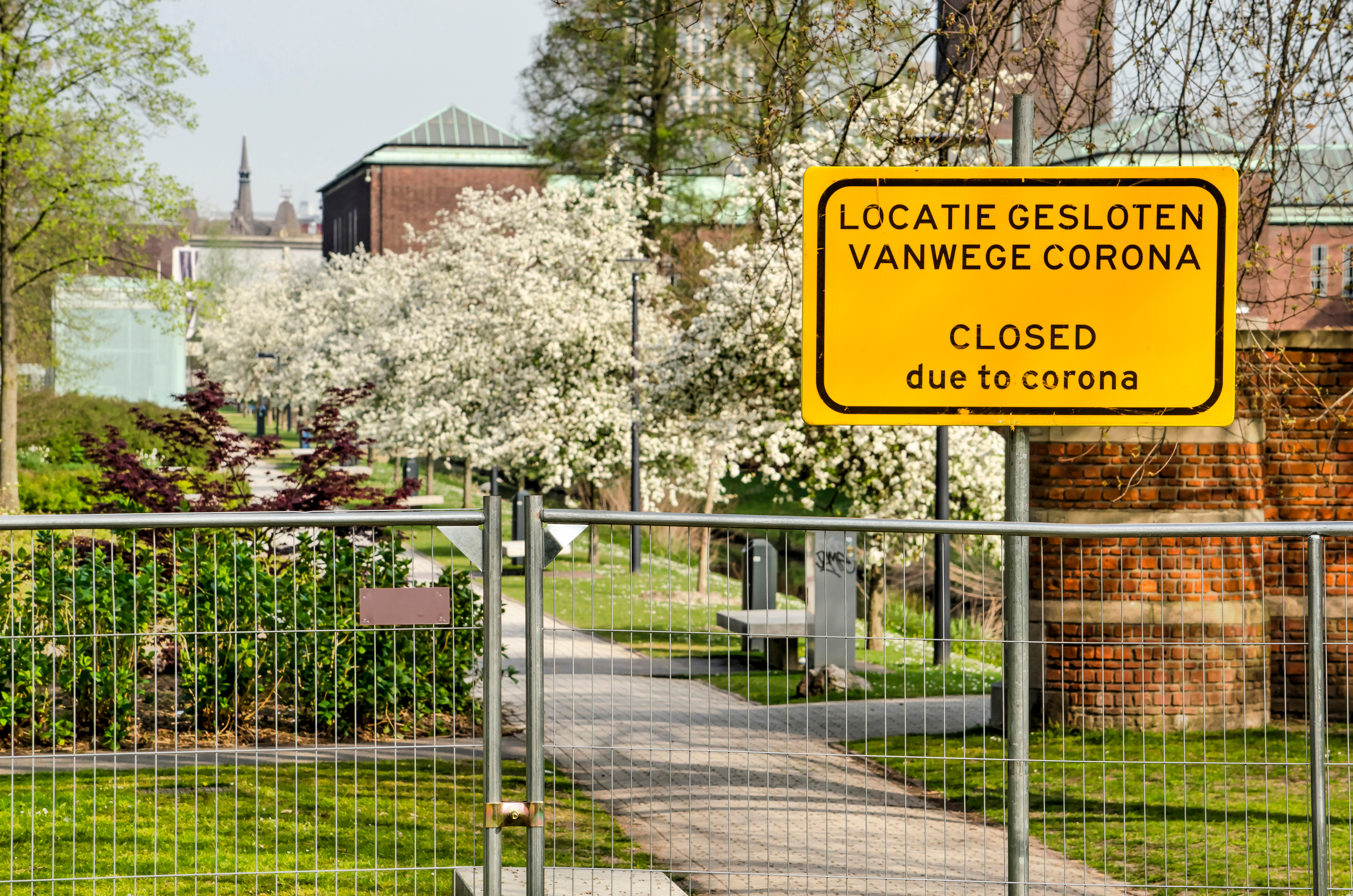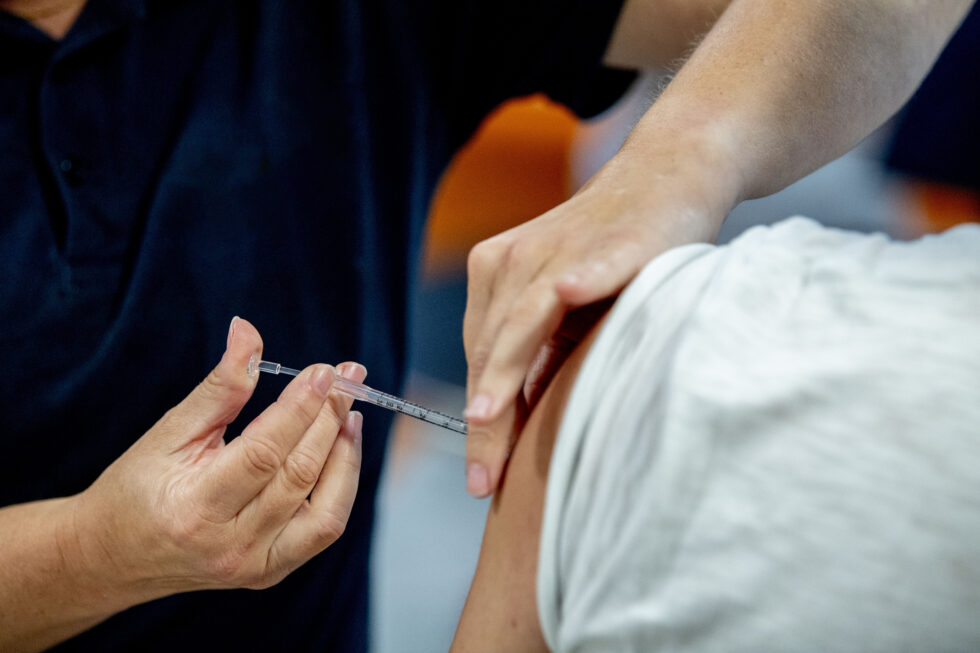
Approach to COVID-19 crisis
The COVID-19 pandemic has resulted in a protracted, international crisis. What started as a health crisis rapidly expanded to become a crisis encompassing the whole of society, on a scale previously unprecedented in post-war Netherlands. The first report of a virus outbreak in China was received in late 2019. On 27 February 2020, the first patient tested positive for the coronavirus in the Netherlands. In response, the government launched a series of measures to tackle the crisis, to mitigate the risks and to develop new knowledge; at the same time, citizens had to learn to deal with the reality of the virus and its consequences for society.
This first sub-report is a description and analysis of the approach to the crisis by the various involved parties in the Netherlands. It covers the preparations for and the approach to the COVID-19 pandemic up until September 2020. Further sub-reports for the subsequent periods deal with the events, measures and interventions characteristic for those periods. The primary objective of all aspects of the investigation is to reconstruct the events and actions taken during the COVID-19 crisis; to subsequently be able to understand and where possible explain why things happened in the way they did. This, finally, in order to learn lessons for the crisis approach now, as well as in the future. A future in which similar or different types of protracted crises that lead to serious disruption in society are entirely plausible.
Broader view crucial to approach to the COVID-19 crisis
The Netherlands was not well prepared for a protracted, national health crisis. The country’s crisis structure and crisis communication proved to be inadequate. People from all sectors involved in tackling the crisis worked hard and in difficult circumstances. But the effort put in by so many does not detract from the fact that improvements in the crisis approach are both possible and necessary. This is the conclusion reached by the Dutch Safety Board in its report Approach to COVID-19 crisis, Part 1, published today. The research report examines the Dutch preparations for a pandemic and the approach taken during the first six months of the crisis. “The COVID-19 crisis touched people’s lives throughout the world. Here, the health crisis spilled over into the biggest social crisis we have seen in decades,” says Jeroen Dijsselbloem, chairman of the Dutch Safety Board. “The Netherlands proved to be vulnerable. This was due to the structures the government had in place for the health sector and the crisis response: they fell short given the nature and scope of the crisis.”
Improvising in an unprecedented crisis
The government and its advisors tried in various ways to minimize the uncertainties presented by this crisis. The lack of knowledge about the virus and the limitations of the testing policy in place in the investigated period meant that information on the spread of the virus and the effectiveness of the chosen approach was not sufficiently clear. Signals about social effects such as loneliness were snowed under in the advisory and decision-making process. “Dealing with uncertainty is part of a crisis,” Jeroen Dijsselbloem observes. “Advisors should not filter out uncertainties, but should rather put them forward to decision-makers including encouraging or disappointing scenarios. This is the only way decisions can be taken, and scenarios can be prepared in a timely manner.”
The Dutch government based its decisions on the advice of the Outbreak Management Team (OMT). This was a conscious decision. But it also meant that the Dutch focus during the first wave in the crisis of COVID-19 infections became overly fixated on the hospitals. Little attention was paid to the other effects of a crisis that was having an unprecedented impact on nursing homes, education, cultural institutions, and small and medium-sized businesses, among other sectors. These effects turned the health crisis into a wider social crisis. The Dutch Safety Board concludes that the government could have improved the effectiveness of its crisis response by making a greater effort to look further ahead and by seeking advice on a wider range of issues than the effects of the virus on acute care.
Limited government communication
During the early months of the pandemic, there was broad public support for the government’s approach. This decreased as the crisis continued. The government’s message failed to reach some groups in society, many of whom did not feel heard or did not agree with how the crisis was being handled. The Dutch Safety Board highlights the one-sided approach to crisis communication and argues that the government should engage more with citizens about their concerns and their needs. By being clear about what is or is not known about the course of the crisis while being less insistent, the government can avoid creating unrealistic expectations among the public about what the future might bring.
Nursing homes
This study takes a particularly close look at how the government’s approach to the crisis impacted on nursing homes. In the early stages of the crisis, all eyes were directed towards acute care and hospitals, and the government only had a limited view of the effects on non-acute care. The Board concludes that, as a result, the impact of the crisis on staff and residents in nursing homes was not adequately incorporated in the decision-making process. Despite the government’s stated goal of protecting the vulnerable in society, the focus was on the vulnerable COVID-patients in hospitals. Scant attention was given to the protection of vulnerable elderly people in nursing homes during the first period. This had serious consequences. It meant that initially protective equipment was primarily made available to hospitals and acute care, and not to nursing homes. When the gravity of the situation in nursing homes became clear, the government issued a ban on visits at the request of the nursing home sector. The social and psychological impact of this measure was keenly felt, leading to loneliness and in some cases denying family members the opportunity to say goodbye to loved ones who lost their lives. The Board speaks of a “silent disaster”: about half of the COVID-related deaths in the Netherlands up to September 2020 were nursing home residents.
Learning lessons for the future
From the numerous interviews conducted by the Dutch Safety Board, it is clear that, across all sectors, those involved in combating the crisis worked hard, while also coping with the effects that the crisis and the Covid measures were having on their private lives. Despite the tremendous resilience that the Board has seen, it is essential that the Netherlands looks closely at the early stages of the pandemic and learns lessons for the future. Because the responsibility for dealing with the COVID-19 crisis lies with the government, the Board addresses all of its recommendations to the government: Strengthen crisis preparedness within government by further developing scenarios and formulating the effects of those scenarios in greater detail. Develop the capacity to improvise. Adapt crisis structures by incorporating an implementation assessment and by considering long-term implications alongside an acute crisis-approach as part of the decision-making process. Ensure that you have an accurate and up-to-date view of the crisis and a good sense of the effect measures will have. Be acutely aware of the needs of vulnerable groups and monitor the approach to make sure that it is working for them. Lastly, when tackling a crisis, there should be a clear separation between the role of the advisors (the experts) and the role of the decision makers (the government officials). The government and parliament should explicitly make and account for the far-reaching considerations they sometimes inevitably have to make in very difficult circumstances in a crisis.
Recommendations
In this first sub-report the Dutch Safety Board investigated how the COVID-19 crisis was dealt with in the Netherlands, through to September 2020. The crisis started as a public health crisis. Within a few weeks it expanded to be a crisis on an unprecedented scale, with broad societal impact. The Board wanted to know: why did it develop in the way it did, and what can be learned from that process?
At this point in time, issuing recommendations requires a degree of restraint because the COVID-19 crisis is still continuing and follow-up investigations are still underway. Nonetheless, the Board has prepared a number of recommendations on the basis of this sub-report so that the approach to the current COVID-19 crisis and future protracted crises with national impact can be improved. Given its responsibility for the approach to crises of this kind, the Board has addressed its recommendations to the Dutch Cabinet.
Protracted crises with an uncertain course: prepare and adapt
Uncertainty is inextricably linked to crises, in particular to crises that continue over a long period of time and have broad consequences. In order to better deal with uncertainties in protracted crises and to reinforce the preparation for large-scale crisis scenarios, the Board issues the following recommendations:
1. Reinforce the preparation for protracted socially disruptive crises by elaborating scenarios with all conceivable consequences and determining the way in which those consequences can be tackled. Then reach decisions on the desired state of readiness and monitor the way in which that state is achieved.
2. Develop the capacity to improvise, including by training this capacity in crisis preparation. Expand the possibilities for improvising by organizing buffers in capacity and a variety of procedures. During the crisis itself, regularly mark, communicate and reflect on interim adjustments to the approach and organization.
3. During a crisis, continue to map out various scenarios, including less likely scenarios with high impact, and anticipate their occurrence. Within the scenario outlines, explicitly identify the degree of uncertainty. Name assumptions made and specify the validity or limitations of the information used, both in advices and decisions.
4. Ensure that high-quality, up-to-date quantitative and qualitative data, as well as less certain information, are included in advices and decisions. In doing so, provide the best possible up-to-date vision on the course of the crisis, and generate insight into the implementation and effectiveness of the measures.
5. Identify (new) vulnerable groups during crises. Recognize the specific risks for these groups in a timely fashion, and respond appropriately. On a structural basis, assess whether the approach for these groups is effective.
The national crisis structure
The uncertainties and - partially unforeseen - problems that emerge during a protracted crisis call for a crisis organization capable of responding flexibly. To ensure effective governance and control, the crisis organization must remain clear to all parties. The Dutch Safety Board therefore makes the following recommendations:
6. Describe in explicit terms the Cabinet-wide responsibility if a crisis shifts from a single department to a national crisis structure. Formulate a department-overarching strategy and make the task of solving the problems a shared responsibility.
7. Adapt the national crisis structure in the following respects, so that it is better equipped to tackle a protracted crisis:
- Safeguard the unity of government policy by establishing and maintaining close ties with the safety regions during a national crisis.
- Improve the implementation of strategy and decisions by performing an operational implementation test, in advance, and through continuous feedback about the process of implementation.
- Organize parallel and separate advice on acute and long term problems. Ensure that both types of perspective are explicitly taken into account in the decision-making process.
8. Adjust the crisis structure for the healthcare field so that the Minister of Health, Welfare and Sports is given authority to effectively tackle problems that go beyond the boundaries of individual sectors, regions or institutions, in any case including directly binding instructions.
9. Monitor the task focus and secure the independent position of administrators as decision-makers and experts as advisors. A clear division of roles contributes to understanding for and traceability of government actions and reinforces the democratic legitimacy of decisions.
Societal support
In a protracted national crisis, support for the approach to that crisis is essential. Crisis communication must reach out to all relevant target groups, and that communication must represent an effective response to the concerns and questions of citizens. To reinforce crisis communication, the Board issues the following recommendation:
10. In a protracted crisis, anticipate a decline in societal support and adjust the communication strategy accordingly. With that in mind, take the following actions:
- Satisfy the information needs of all target groups and in reaching out to these groups, make use of parties close to them;
- Encourage government parties and officials to identify uncertainties concerning the crisis and the effectiveness of measures, with a view to avoiding unrealistic expectations;
- Guarantee the input from social and behavioural sciences in crisis and communication policy;
- With the support of local parties, seek systematic dialogue with citizens, to ensure that their concerns, questions and needs are given a clear place in crisis and communication policy.
Recommendations
Related investigations
-

Approach to COVID-19 crisis – Part 2: September 2020 - July 2021
- General
- Healthcare
- ...
-

Approach to COVID-19 crisis – Part 3
- General
- Healthcare
- ...

